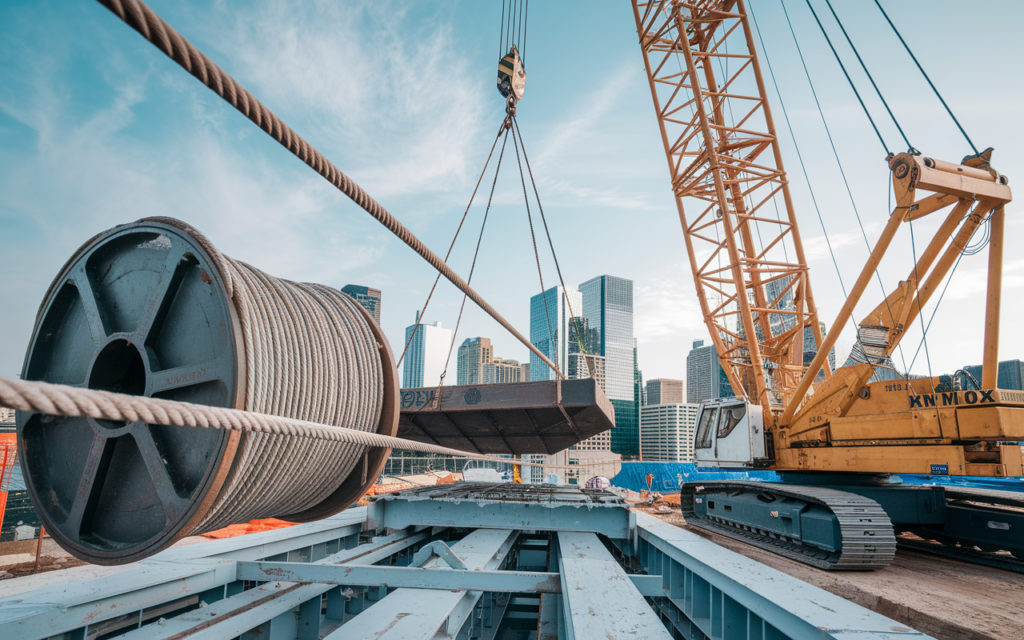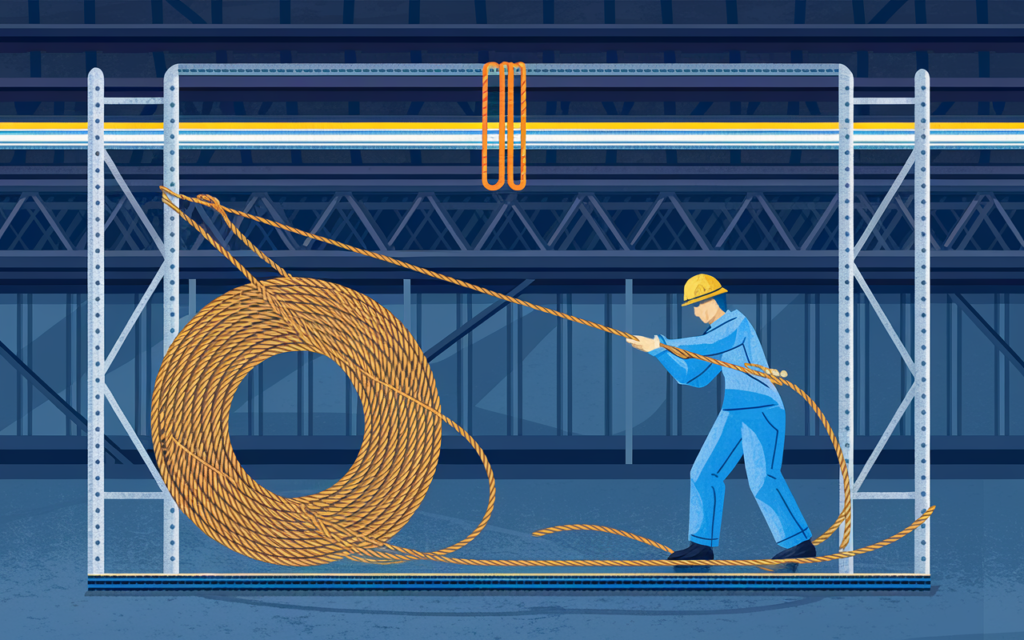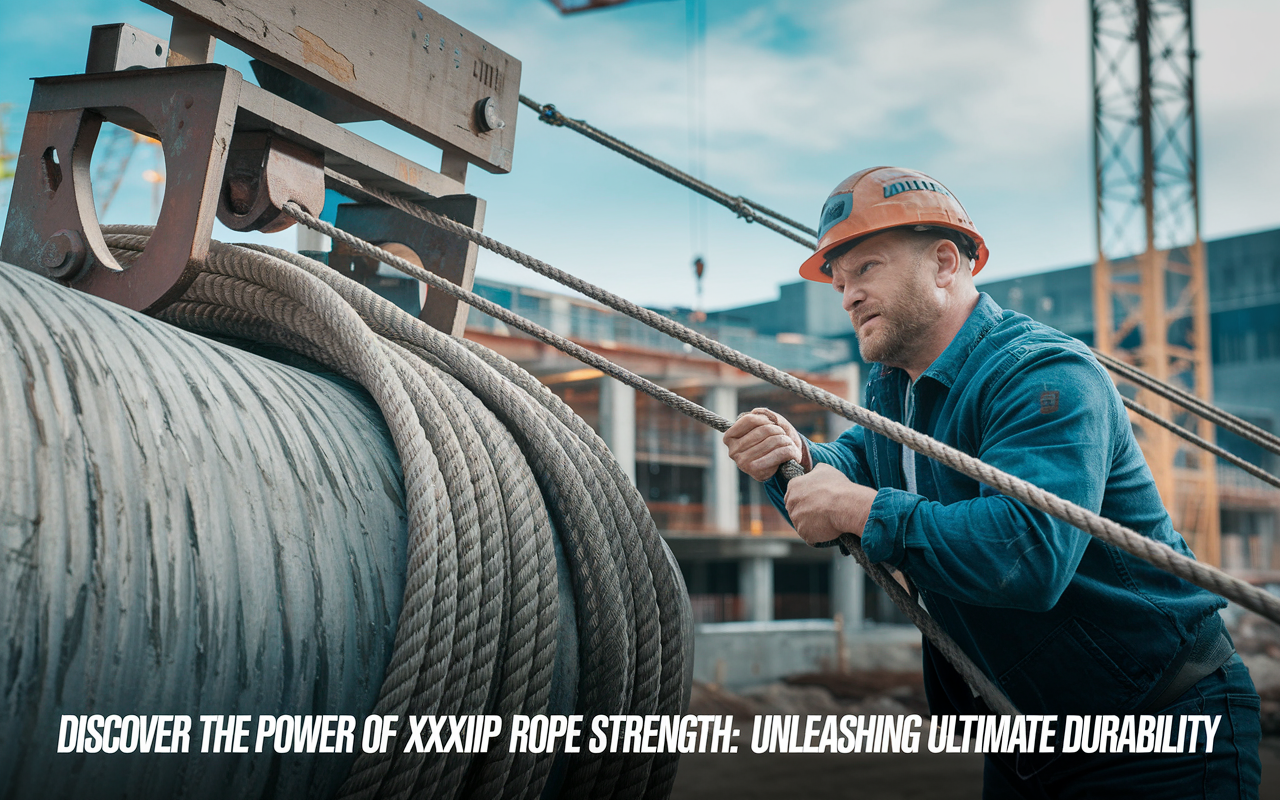Introduction xxxxip wire rope strength
Although there are numerous parts and accessories used when it comes to lifting, pulling and rigging applications, none is as crucial as wire ropes. They are popular in the construction business, mining, the oil and the gaseous industries and the transporting industries as well. Among the factors distinguished in wire ropes, strength is significant as the component defining the efficiency and durability of ropes. This article delves into the concept of XXXXIP wire rope strength, its significance, how it’s calculated, and its applications.
What is XXXXIP Wire Rope?
The XXXXIP wire rope is a particular type of wire rope that is built to have higher capacity, long life, and wear resistance. XXXXIP stands for a specific kind of construction or categorization of wire ropes that are produced by employing better technologies that enhance the mechanical characteristics of the ropes. These ropes are developed to support large loads and to operate in severe environments for a very long period in highly stressed applications.
The construction of XXXXIP wire ropes usually consists of several wires grouped into strands with helical arrangement of the strands and the whole rope is made by twisting of the strands. The actual elements of these ropes and the process of their production make them highly tensed and thus suitable for lifting operations.
The Importance of Wire Rope Strength
In general, the strength of a wire rope is the paramount feature that defines the likelihood of the wire rope being suitable for a given application. Many wire ropes are normally exposed to tensile loads, which implies that the wire ropes are forced to elongate. If a rope is not strong enough, it can snap and lead to dangerous consequences and or destruction of property needed for a stronger rope.
XXXXIP wire rope strength is especially crucial in high-risk industries like oil drilling, construction, and mining, where large, heavy loads need to be lifted or pulled with precision. An inadequately strong wire rope means failure to effectively support equipment with disastrous consequences: time loss, cash losses, and potential risks to human life. Hence, manufacturers have embraced technology to make the XXXXIP wire ropes to be uniformly safe and durable.

Factors Affecting XXXXIP Wire Rope Strength
Some of the features that define the general sturdiness of XXXXIP wire ropes are as follows: Knowledge of these elements forms part of the basis of getting the correct rope for this type of work.
Material Composition: The type of material applied when developing XXXXIP wire ropes contributes to their capacity in a big way. The material most preferred for these ropes is high-carbon steel owing to its high tensile characteristics. Depending on the properties required, some ropes may use alloy steel or stainless steel in the construction to improve corrosion resistance and durability. Because it determines the strength, flexibility, and durability of the rope, the material to select fixes itself.
Wire Diameter: The diameter of the individual wires in the rope adds to its strength and determines the protector used. The smaller diameter cables normally have improved flexibility; however, increased tensile strength is normally associated with increased cable thickness. In the case of the XXXXIP wire ropes, the wire diameter is chosen deliberately, depending on the strength and function that is needed.
Strand Construction: Finally, the rope construction is differentially defined by the number of strands, and the number of wires in each strand determines the overall strength of the rope as well. These wire ropes, known by the brand name XXXXIP, may contain multiple strands running through them to enhance the capacity of the wire ropes to balance the load that is exerted on them. The arrangement of the strands (for example, 6×19, 6×36) can also determine the strength-to-weight ratio as well as the flexibility of the rope.
Lubrication and Maintenance: Lubricating XXXXIP wire ropes is an effective means of preserving their capacity for a long time. Lubricants act as an intermediate between the individual wires so that there will be no early wearing away of the cables. The characteristics of the rope also include the periodicity of inspecting and re-lubricating it to common use throughout its lifetime.
Environmental Conditions: Some factors, which include temperature, humidity, and effects of chemicals are likely to affect the strength of wire ropes. XXXXIP wire ropes can be engineered not to be affected by these environmental factors, hence the rope’s ability to exhibit strength in operation. For example, ropes to be used in interaction with seashore waters will require resistance to rusting, while those in hot conditions will need to maintain strength with flexibility.

How XXXXIP Wire Rope Strength is Measured
In order to guarantee that XXXXIP wire ropes meet their designated applications, the producer applies a number of exams that evaluate the mechanical characteristics of the wire rope. Tensile strength is the most commonly used factor to determine wire rope strength, and it is defined as the maximum load that a rope can support without breaking.
Breaking Strength: The breaking strength is the UTS of the rope which lets the maximum load that can be supported on the rope. It is usually defined by the tensile test, in which the rope sample is stretched up to failure. The outcome may be expressed in kilonewtons (kN) or tons.
Nominal Breaking Strength: Nominal breaking strength is the mathematical calculation of the rope’s carrying capacity, which is determined by measuring the characteristics of the material and the structure of the rope. This value is used to define the rope performance when it is under the usual conditions with a possibility of varying concerning the size and type of the construction of the rope in question.
Safety Factor: In order for the wire ropes of the XXXXIP to be able to bear unusual stresses, it is provided with a safety factor on the breaking strength. The safety factor is ordinarily presented in a rate form, and relates to the breaking strength to working load limit. For instance, if the rope breaking strength is 200KN and with a safety factor of 5, the WLL would be 40KN. The reliability of wire ropes in such applications depends on safety factors.
Applications of XXXXIP Wire Ropes
Due to their impressive strength, XXXXIP wire ropes are used in a wide range of industries and applications. These include:
Construction and Lifting Operations
In the construction industry, XXXXIP wire ropes are often used in cranes, hoists, and other lifting equipment. Their high tensile strength makes them ideal for lifting heavy materials such as steel beams, concrete blocks, and large machinery. The reliability and stability of these ropes are paramount in preventing accidents and ensuring that construction projects proceed smoothly and safely.
Mining Operations
Mining operations often involve lifting and transporting heavy materials from deep underground. XXXXIP wire ropes are used in elevators, skips, and draglines to move these materials to the surface. The strength of the ropes is crucial in preventing failures that could result in accidents or loss of valuable resources.
Oil and Gas Industry
In the oil and gas industry, wire ropes are used in drilling rigs, hoisting systems, and various other equipment. XXXXIP wire ropes are particularly important for deep-sea drilling operations, where ropes need to withstand harsh marine environments and carry enormous loads. The strength of these ropes is essential for the safety and efficiency of oil extraction operations.
Marine Applications
Marine environments are particularly harsh on wire ropes, with exposure to saltwater, high humidity, and constant motion. XXXXIP wire ropes used in marine applications, such as anchor lines, winches, and towing cables, must be able to resist corrosion and maintain their strength even in these extreme conditions.
Transportation and Logistics
Wire ropes are also essential in the transportation and logistics sectors, especially in systems like cable cars, elevators, and conveyors. XXXXIP wire ropes are used in these systems due to their superior strength and reliability, which allow them to transport goods and passengers safely.

Enhancing XXXXIP Wire Rope Strength
With industries growing nowadays and every industry expecting much from their equipment, manufacturers never seem to stop looking for improvement in the strength and durability of XXXXIP wire ropes. Development in material science, using technology for manufacturing ropes, and design improvement have made ropes stiffer, stronger, flexible, and long-lasting.
One of the key innovations in XXXXIP wire rope strength is the development of composite materials. These ropes have both synthetic fibers and steel wires incorporated in them to form what can be composite ropes. Composite ropes are normally lighter compared to the established wire ropes, hence reducing the wear out on pulleys and other parts.
Also, there is an emerging variability in new coats of corrosion-resistant material needed to shield the XXXXIP wire ropes from the environment. These coatings, therefore, enhance the durability of the ropes and make them withstand the effects of chemical erosion, hot temperatures, and corrosion.
Conclusion
The wire ropes of XXXXIP should possess strength, and this can, in one way or the other, determine the efficiency of the wire ropes in industries. These ropes are invaluable in many sectors of today, including civil construction, construction of buildings, and oil and gas industries, among others, due to their capability of handling massive loads to suit environmental conditions. As technology continues to advance, we can expect XXXXIP wire rope strength to improve even further, providing safer and more efficient solutions for lifting, pulling, and transporting heavy loads.
Aspect-like material from which the wire rope is made, the construction of the wire rope, and the maintenance done on the wire rope are very important keys in deciding on the right rope to use for any job. Hence, by acquiring high-quality XXXXIP wire ropes, industries can be confident in the serviceability of their equipment and the efficiency of production.
